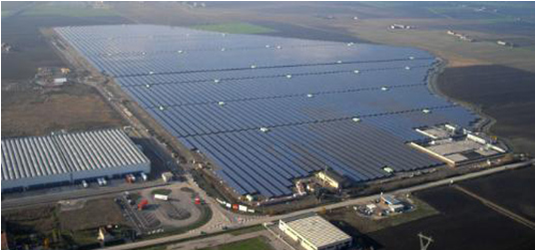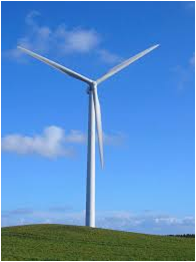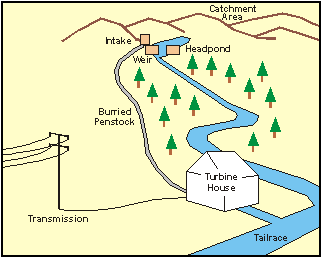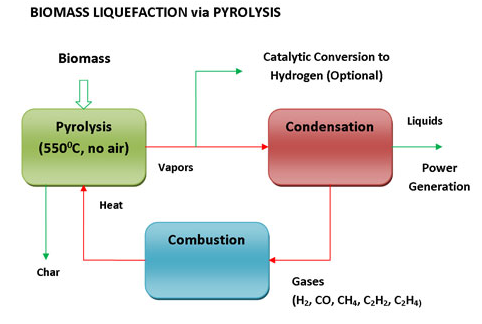Renewable Energy Key Technologies
Author: Marcello De Falco, Associate Professor, University UCBM – Rome (Italy)
1. Theme description
Human technology has always looked for solutions to exploit the wide and always available energy provided by the earth and by the sun. The beginning of the industrial era, totally focused on the use of fossil fuels to supply the huge amount of energy needed, slowed down the research on renewable energy technology but, from 1970s, when the communities understood the environmental, societal and political negative effects of an extensive use of fossil fuels, the renewable energies gained a new thrust forward.
Today, renewables supply an important share of the total energy, with an average increase of 6% per year. The European Commission imposes the target of producing 20% of the total energy from renewable by 2020 [1] and devotes many financial resources to achieve it [2].
A first classification of the enormous number of technologies developed in the past and already applied or in progress can be made dividing them on the derivation of the energy:
- from the Sun;
- from the Wind;
- from the Water;
- from the Organic Matter.
In the following, an overview of the main technologies and applications is reported and some references are given to examine in depth some of them.
2. Solar Energy
The production technologies which exploit solar energy can be divided in three classes:
- Photovoltaic;
- Solar thermal energy;
- Solar Power concentration.
Photovoltaic technology exploits the photovoltaic effect, by which a voltage is created in particular materials (mainly semiconductors) upon exposure to sun light.
A wide number of photovoltaic plant with Si-based modules is installed worldwide, thanks to the high incentives made available in the last 10 years. Such modules assure a low conversion efficiency (8% – 13%), calculated as the ratio between the electricity produced to the solar energy received.
Fig. 1 – SunEdison’s 70 megawatt (MW) photovoltaic (PV) power plant in Northeast Italy [3]
The research is mainly focused on the development of new materials for the improvement of the efficiency [4]. As an example, ENI is developing a polymer solar cell, printed on small-sized flexible substrate [5]. The production process has the targets of producing flexible modules with an efficiency in line with the commercial modules at competitive costs.
Moreover, researches are devoted to find always new applications for the photovoltaic technology, as the solar-driven pumps [6].
Solar thermal technologies are able to exploit solar energy to produce streams of hot water, steam at low pressure or to supply low-temperature heat for various processes. Many solar thermal plants have been installed in the last years for domestic applications (domestic hot water). Concerning with solar thermal energy supplied for processes, surely one of the most interesting application is the solar powered desalination [7].
Solar Power concentration systems are able to heat up a thermal fluid or a system to high temperature (400-1000°C) exploiting the sunrays concentration in focal points or lines. The high temperatures allow the production of clean electricity or the supplying of high quality energy to industrial processes. Four technologies are developed or under development:
- Parabolic Trough Power [8], [9]
- Solar Thermal Tower Power [10]
- Dish-Stirling Systems [11]
- Solar Chimney Power [12]
Fig. 2 – Solar Power concentration technologies
3. Wind energy
Wind-powered plant can convert wind power to electricity by exploiting the rotating movement of a rotor.
Many wind farms have been installed worldwide in the last years, also thanks to the high incentives that promoted the technology diffusion.
But, the traditional horizontal-axis turbines has a series of problems that limits the applications, as the low efficiency, mainly due to the fact that the turbine can work only within a range of wind velocity (not too low and not too high), an expensive maintenance and the noise which annoy local residents.
Fig.3 – Horizontal-axis wind turbine
Many innovations are proposed to solve these problems. The most interesting is the vertical-axis turbine. The shaft is mounted on a vertical axis, perpendicular to the ground, thus allowing the alignment with the wind without the necessity of adjustment when the wind direction changes. At the present, the only one commercial product is the Darrieus turbine [13], but many research and industrial efforts are devoted to find innovative and competitive solutions.
Fig. 4 – Darrieus turbine
Many other wind turbine shapes are proposed by the technological and scientific communities, all aimed to reduce the noise, enlarge the wind velocity range and increase the conversion efficiency [14].
4. Hydro and tidal energy
Hydroelectric power exploits the energy from the movement of water streams to generate electricity by rotating a rotor of a turbine connected to a generator.
Among the number of developed technologies, the most common is a system composed by a dam where water is stored until it is needed to produce electricity.
Fig. 5 – Hydroelectric dam layout [15]
Another technology is the run-of-the-river type, located on swift flowing streams or rivers and able to extract the energy from the water as it passes through the station.
Fig. 6 – Run-of-the-river hydroelectric technology [15]
Moreover, different types of turbines are installed to convert the water flow movement in mechanical energy to be exploited for electricity generation, among which:
- Francis turbine;
- Propeller turbine;
- Pelton turbine.
Many research efforts are devoted to reduce the power size of hydroelectric plants and to reduce the impact on the environment, with the scope to increase the application potentialities [16].
Another form of hydropower is the tidal energy, which converts the energy of the tides into electricity or other useful forms of power thanks to submerged turbines [17]. The tide is created by the gravitational effect of the sun and the moon on the earth which provoke cyclical seas movement. The main benefit of the tidal energy is that tides are predictable, unlike sun or wind.
The main innovations proposed concern the turbine technology and, in general, the system to convert wave and tidal energy in electricity [18], [19], [20].
5. Biomass
The biomass is an organic matter that stores energy through the photosynthesis process and can release it by a combustion or a by conversion process. Since the biomass contains carbon, its combustion emits carbon dioxide. On the other hand, the same amount of carbon dioxide has been adsorbed during the growth, therefore biomass is considered a clean renewable energy since the CO2 balance is equal to zero.
Biomass exists in the form of wood products, dried vegetation, crop residues, aquatic plants or animal/human wastes. There are four main processes to generate energy from biomass:
- The Direct Combustion [21] – it is the most frequently used process to extract energy from biomass. The biomass energy is released by burning the solid biomass and energy is recovered in the form of heat, which can be used for thermal requirements or converted in electricity by means of a steam / gas turbine or organic Rankine cycles (ORC).
- The Pyrolysis [22] – it is a thermal process, performed in absence of oxidizing agents and at relatively low temperature (500-800°C). Generally, different fractions are produced, depending on the operating temperature and the biomass composition: a gas fraction, composed by methane, hydrogen, carbon monoxide and carbon dioxide, a biochar and a bio-oil, which is the most interesting pyrolysis product.
- The Gasification [23] – is a thermo-chemical process which converts the solid biomass in a high heating value gas mixture composed by H2, CH4, CO, H2 In the gasification process, the biomass reacts at high temperature (850-1000°C) with a fumigator (air, oxygen, steam or CO2), which provide oxygen for the process. Gasification by-products are char coal, ash with varying carbon contents and condensable low molecular hydrocarbons. Many pre-industrial plants have been developed, among which the thermal gasificator FICFB (Fast Internally Circulating Fluidized Bed) can be cited [24].
Fig. 7 – Pyrolysis process layout [25]
- Biofuels – Biofuels are fuels derived by production processes whose feedstock is composed by biomasses. Biofuel can be derived from a wide number of different biomasses, from the marine algae to solid wood-based wastes. Among the various technologies developed or under study, the ENI developing processes for the production of lipids from lignocellulosic biomass and the subsequent conversion of lipids into a biofuel to be fed in traditional engines can be cited [26].






